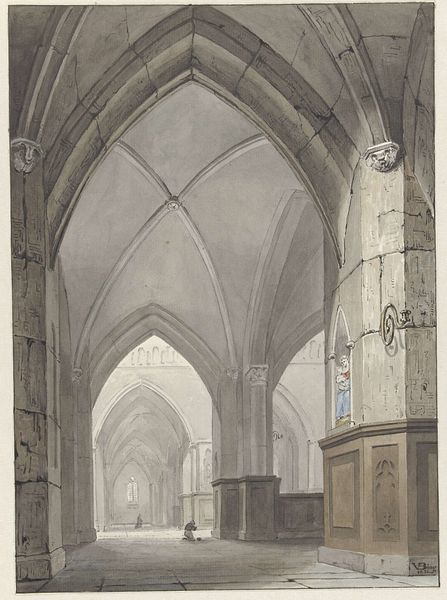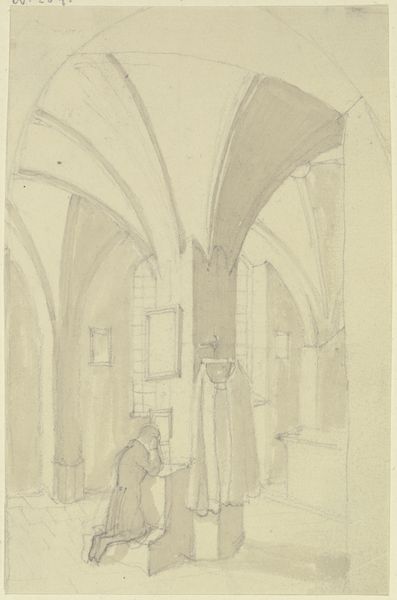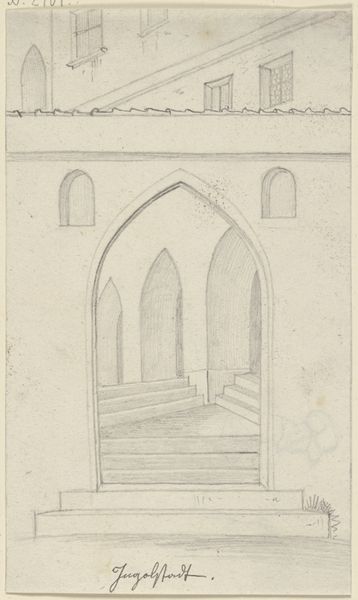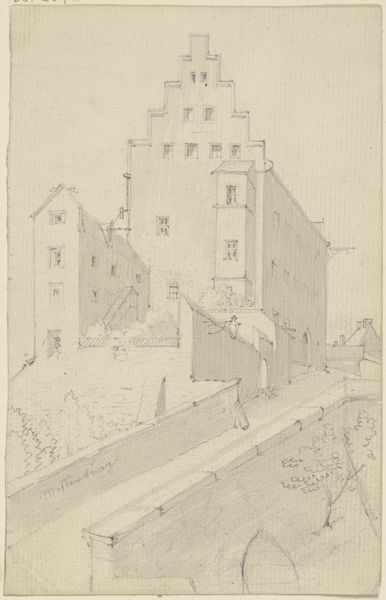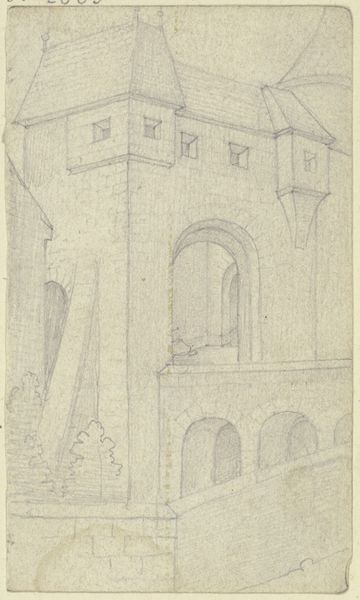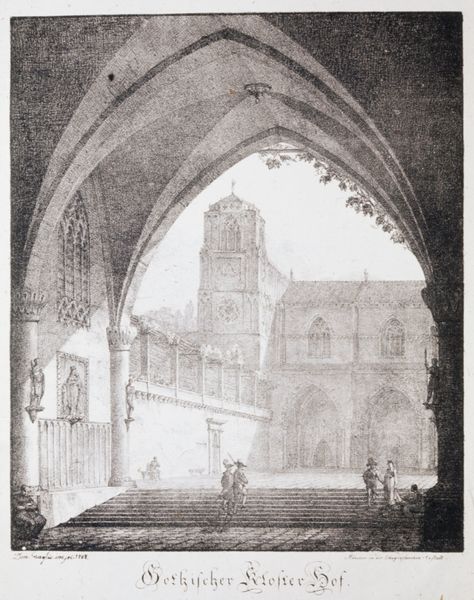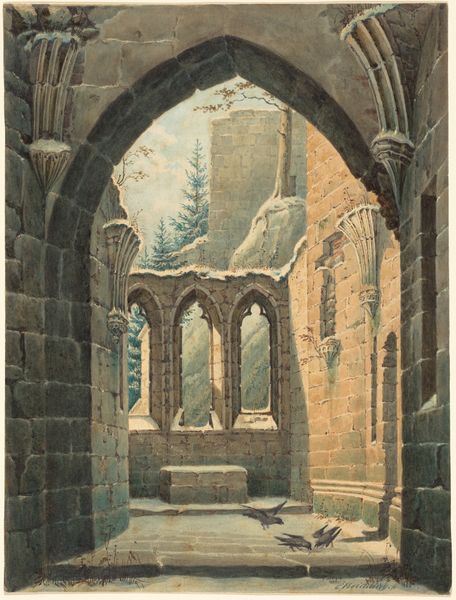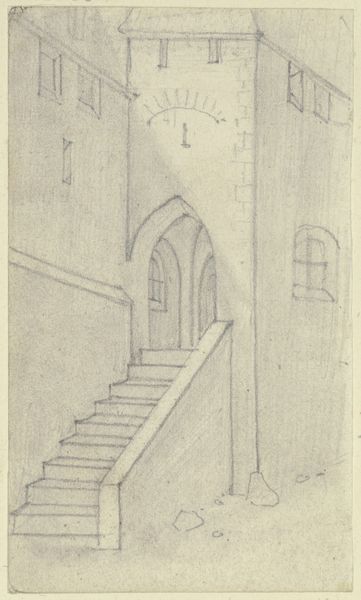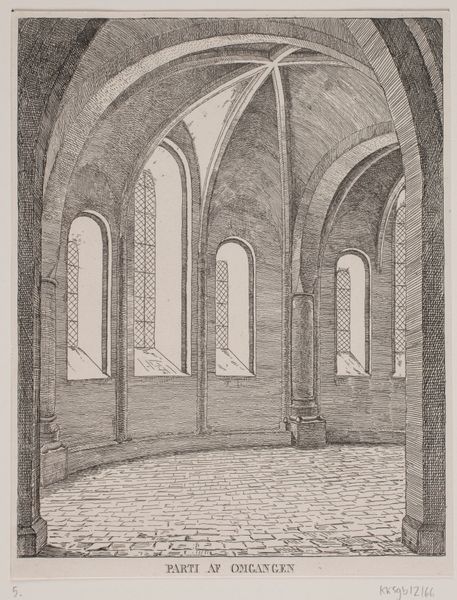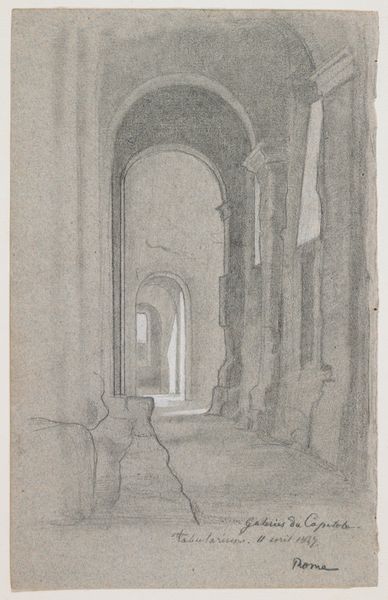
Blick vom Turm der Gumbertuskirche auf die Johanniskirche in Ansbach
drawing, ink, architecture
drawing
16_19th-century
landscape
ink
cityscape
watercolor
architecture
Copyright: Public Domain
Editor: This ink and watercolor drawing, "View from the Tower of the Gumbertus Church onto the Johannis Church in Ansbach" by Karl Ballenberger, presents an interesting perspective, literally! We see the city framed by gothic arches. What stands out to you most about this cityscape? Curator: What strikes me is the implicit role of the church here. Ballenberger isn't just depicting Ansbach; he's positioning the viewer within a specific institutional space. The gaze is sanctioned, almost pre-determined, by the architecture itself. What does that suggest to you about the role of the Church at that time and its relationship to the urban landscape? Editor: That's a compelling point! It suggests a level of control, that even a view is mediated by the church's presence and power. Almost like a panopticon, but more…benign? Curator: Precisely! And think about who would have had access to this viewpoint. The drawing subtly reinforces social hierarchies. The seemingly objective "view" is in fact a privilege. Does knowing that alter your initial reading of the drawing’s seemingly straightforward depiction of Ansbach? Editor: Definitely. It shifts the focus from a purely aesthetic appreciation of the cityscape to a consideration of power dynamics and social stratification embedded in the image. I guess I was just seeing it as a nice rendering of gothic architecture before, but you’ve made me see it as an statement about control. Curator: Exactly, art, even something as simple as a landscape, reflects the complex societal structures it was built from, the act of depicting is always intentional and speaks about society in more ways than one. Editor: Thank you, this was enlightening! I will definetly be seeing art through another lens now.
Comments
No comments
Be the first to comment and join the conversation on the ultimate creative platform.
